WHAT WE'RE WATCHING
Could biomimicry solve humanity’s biggest problems? A new docuseries explores
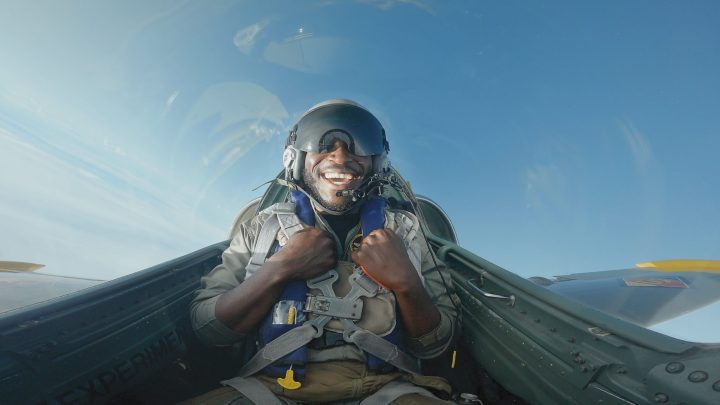
Maverick Life interviewed Wildlife TV presenter Patrick Aryee about ‘Evolve’ — a docuseries on how unique animal adaptations could inspire tech innovations that change the course of our species.
Evolve is a science communication adventure series exploring the practical application of biomimetics — human technologies that emulate naturally evolved systems. Each episode follows charming British TV presenter Patrick Aryee on a globetrotting quest to observe the specialised adaptations that allow animals to thrive in their environments.
With the help of experts in all sorts of scientific disciplines, Aryee explains how the refined anatomy of each of these elegantly complex organisms is inspiring human innovations, and the astounding futures that might be possible were these technologies fully adopted.
“Biomimicry is a process of looking towards natural systems, the natural world, animals, plants, to figure out what challenges they’ve had over the 3.8 billion years that life has been around on this planet, and how they’ve managed to overcome those challenges — how they managed to evolve. My mission is to discover if our future could lie within their natural history,” says Aryee.
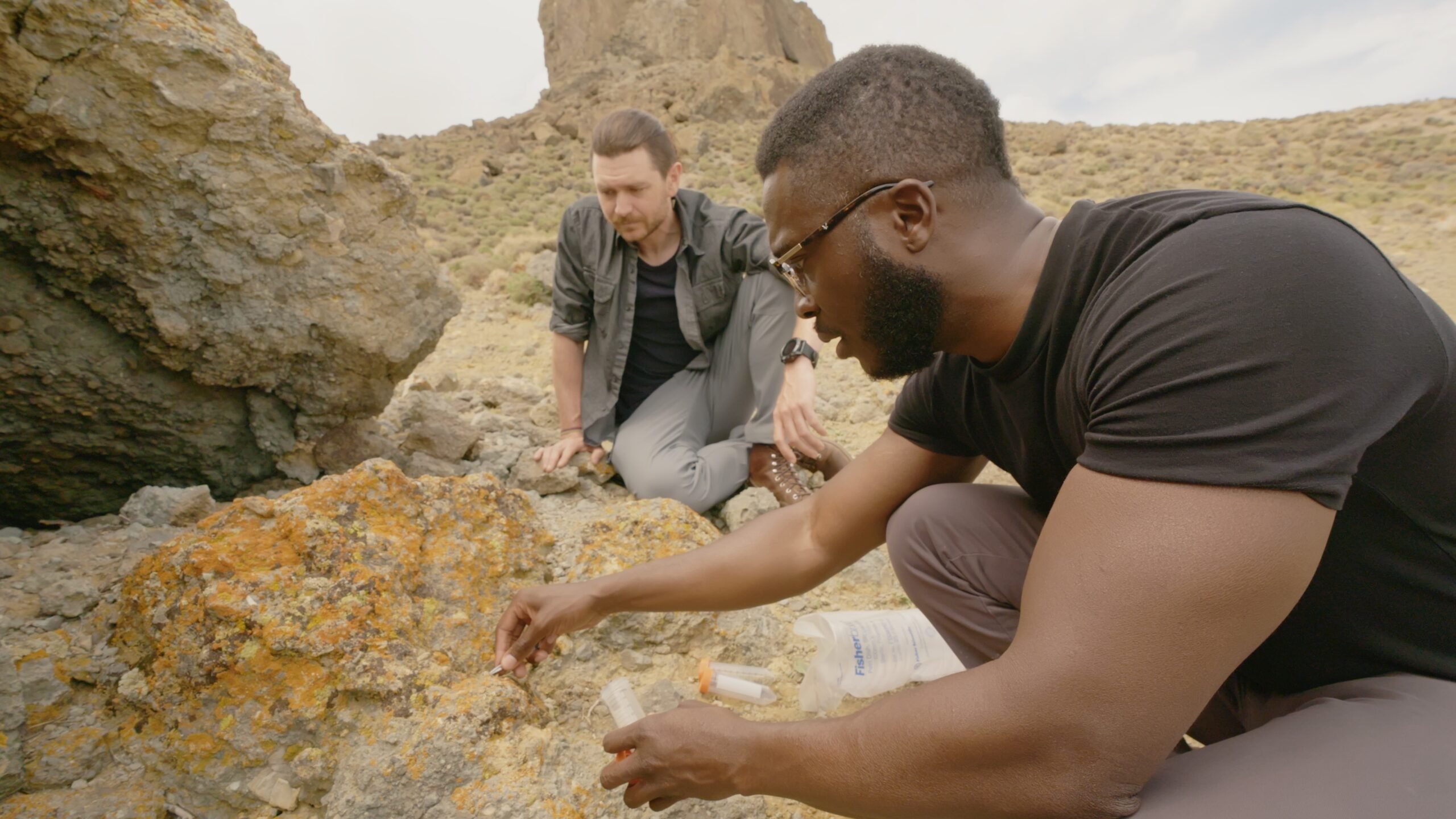
Still from ‘Evolve’. Image: courtesy of Curiosity Studios
Science communication programmes, particularly those that explore speculative science often stretch out their wildlife or animated footage because acquiring it is expensive and they need to make the most of what they have. Evolve has access to abundant footage of many different kinds, from wildlife photography to landscape drone pans, talking heads and animated simulations and overlays. It does not draw out its many segments any further than need be to make its point, transitioning speedily from each adaptation and innovation to the next. The pace is consistent and the type of content changes frequently so that it never feels boring or repetitive.
Aryee’s overwhelming enthusiasm persuades you to consider creatures we’re fairly familiar with from a fresh perspective. One gains a new appreciation for these animals when learning, for example, how the structure of a camel’s nasal cavity is being copied to create water-efficient greenhouses; or how the high blood pressure of the gravity-defying giraffe inspired G-raffe suits, which use body compression to increase pilots’ resistance to G-force; or how wood frog hibernation may hold the key to cryogenics that one day enables long-term space travel. The list goes on and on.
Inspiring involvement in science
These cutting-edge inventions are mostly linked in some way to combatting (or dealing with the imminent fallout of) the climate crisis — which is now an inseparable part of wildlife television.
Many viewers have become desensitised to calls to action and weather reports of rising temperatures with a chance of showers and apocalyptic disaster, so the issue of how to approach global warming is a tricky one. Aryee’s approach is perhaps too subtle, but it certainly combats humanity’s aversion to bad news — it’s a model based on inspiring interest and involvement, the same way Aryee himself was first inspired, and the same way that the producers of Evolve conceived the show.
“In the early nineties, there was a show in the UK called Tomorrow’s World. I think it was on Tuesdays or Wednesdays, 7PM, just after the Fresh Prince of Bel-Air, and I absolutely loved it. It was all about what technologies were going to exist, so I remember seeing everything from stem cell technology to broadband.
“Fast forward to 2015, I was asked to do a TEDx talk called How The Chicken Cured Cancer, that kind of started out from this story I found out about a scientist who, in short, discovered that cancers could be caused by viruses. So I started looking into all of these different examples from sharkskin technology, from the Namib beetle being able to harvest water out of thin air, from the frequency of a cat’s purr having what I call an osteo-regenerative effect — it’s able to restore bones! Broken bones heal faster when you apply a certain frequency of sound.
“I’m a big fan of Star Trek and Star Wars. When you look at the Med Bay in Star Trek, some of that technology seems completely farfetched, but imagine if you had a severe bone disease or a bad break and you could potentially go to the doctor once a day, or have a device put in your arm or leg which applies these sound waves to help your osteocytes produce bone matter and regenerate quicker? After the TED talk, the producers of Beach House Pictures, who were interested in biomimicry, got in touch and said ‘we’ve been inspired by some of these stories that you’ve been telling.’”
Evolve extends this model of inspiration to its handling of representation, providing exposure to scientists and experts of diverse backgrounds.
“Representation is so key when we’re thinking about science. Whether that’s the black community; the African community; whether that’s for women and young girls; whether that’s for people who are disabled, I think it’s really important to leave people feeling inspired and wanting to do it themselves,” he says.
Aryee is a charming host, and his passion for the natural world is obvious and infectious (he cheerfully admits that he has to remind himself to use descriptive words on camera instead of just saying “Oh wow!”). Many people inspired by the show may simply be enamoured by his charisma and luxurious adventure lifestyle.
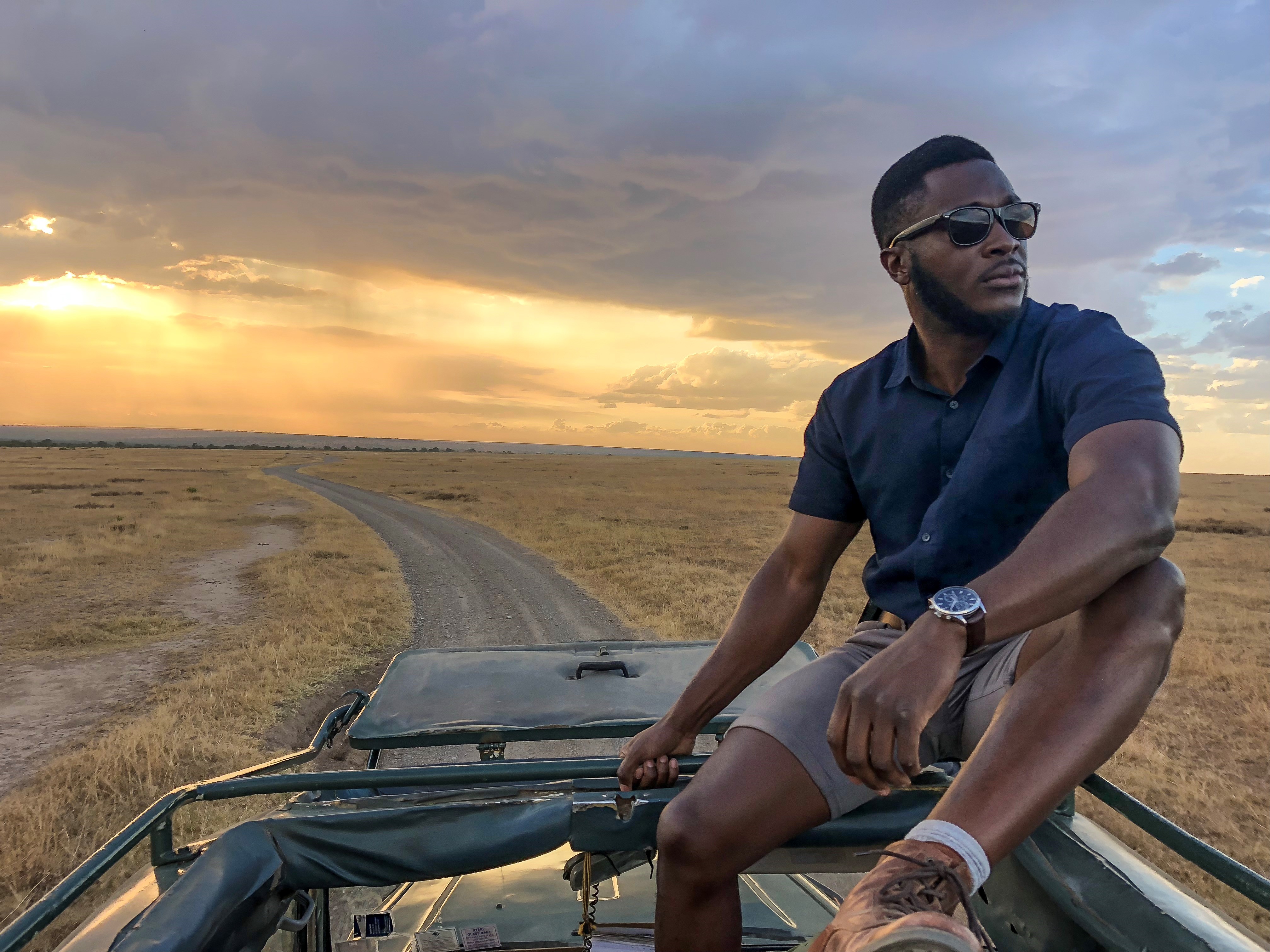
Presenter Patrick Aryee in ‘Evolve’. Image: courtesy of Curiosity Studios
He’s a pretty gonzo presenter, frequently filming selfie-style and getting involved as much as possible — zooming about like Top Gun, canoeing with seals or munching on desert-grown cucumber. Occasionally this gives the show the quality of a braggadocios holiday Instagram story. On the flip side, there’s no shortage of visually engaging footage — the creatures and landscapes do all the heavy lifting — so if you can beat the envy, it makes for a fabulous escape to travel the world with this relentlessly enthusiastic adventurer.
Having studied biology, Aryee’s understanding is somewhere between that of the experts he interviews and laymen watching the show. He likes to position himself as the audience’s “curious friend”.
“It’s really important to make these concepts and these shows as digestible as possible for the everyday viewer. I’m hoping that we pitch it just at the right level where it spurs other people, whether they’re experts or not, to have a genuine interest and curiosity and then go and do their own research,” he explains.
Practical and entrepreneurial biomimicry
Aryee excitedly swears by the usefulness and potential impact of each technology, and conjures visions of how they could save and improve lives if pushed to radical extremes. They’re exciting dreams, but sometimes far-fetched and unlikely to be taken up to a large degree for the same reasons that other resource-saving technologies are not taken advantage of — money, politics, negligence etc. South Africa should have access to enough sources of renewable energy to possibly make rolling blackouts a nightmare of the past, but building the infrastructure required involves paperwork, bulky tenders that can be abused, time, and an enormous amount of money.
A segment in Evolve focussing on underwater wireless data transfer inspired by dolphin’s click-based communication starts by proposing that underwater sensors could transmit data about tectonic activity to warn about dangerous natural disasters further in advance — an exciting area of ongoing research. But Aryee can’t help pushing it further to hypothesise that underwater wireless would help us live under the ocean like Atlanteans, which is slightly preposterous and sensationalist.
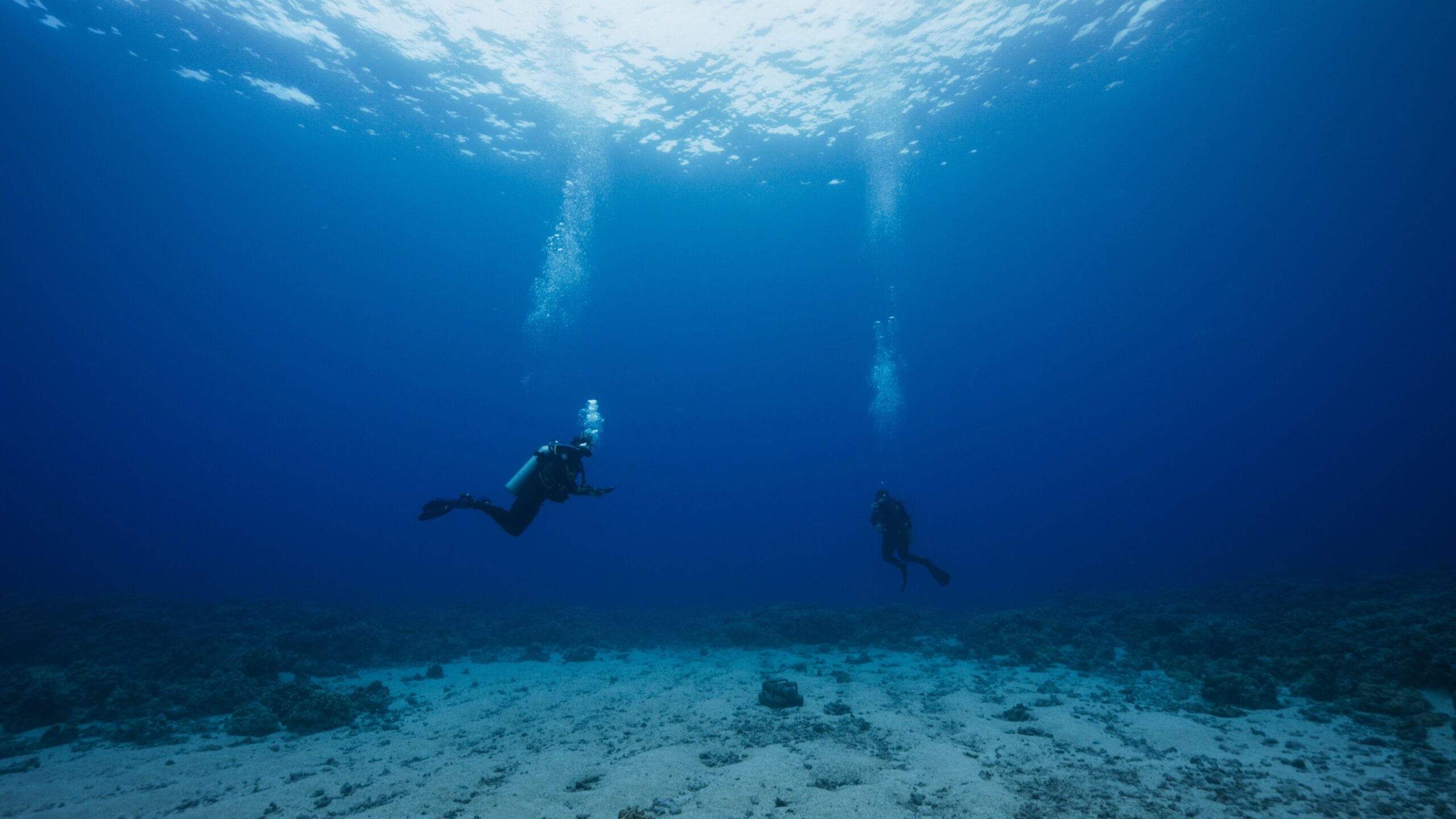
Still from ‘Evolve’. Image: courtesy of Curiosity Studios
Aryee speaks of an “ever moving matrix of ideas” in which our categorical separations of scientific fields are somewhat arbitrary. He wrote his master’s degree thesis on whether science inspires science fiction or vice versa.
“I think there’s a lot of interplay there and ultimately [science fiction] helps people to see the world differently and be inspired by an art form that then makes you think differently and apply a scientific process again with fresh eyes.
“It’s something that I’d like to look into more — trying to help entrepreneurs make that connection, make that link to the natural world. [Evolve] is showcasing what biomimicry is and then giving examples of those great connections. One that we, tapped into was shark skin technology: if you rub your hands on a shark with the grain from head to tail, really smooth; if you go the other way, rough as sandpaper. Its skin is made up of tiny little scales called dermal denticles and that makes it more streamlined in the water. But what it also does is on those dermal denticles you’ve got these things called nano-ridges that make it really hard for bacteria to stick onto the surface of its skin because it requires more energy and nature tends to go along the smoothest, most energy-efficient route, so you don’’t get buildup of bacteria on its skin.”
Now, a company called Sharklet Technologies takes impressions of the skin and then “creates its own proprietary kind of pattern and design based off the sharks. This impression is now being printed out onto sheets of film and you can coat high-contact surfaces, like door handles or light switches in hospitals with this Sharklet Technology shark skin film which then prevents harmful bacteria from sticking and growing. So we’re thinking about innovation, entrepreneurship, and business [that can] save lives as well,” he explains.
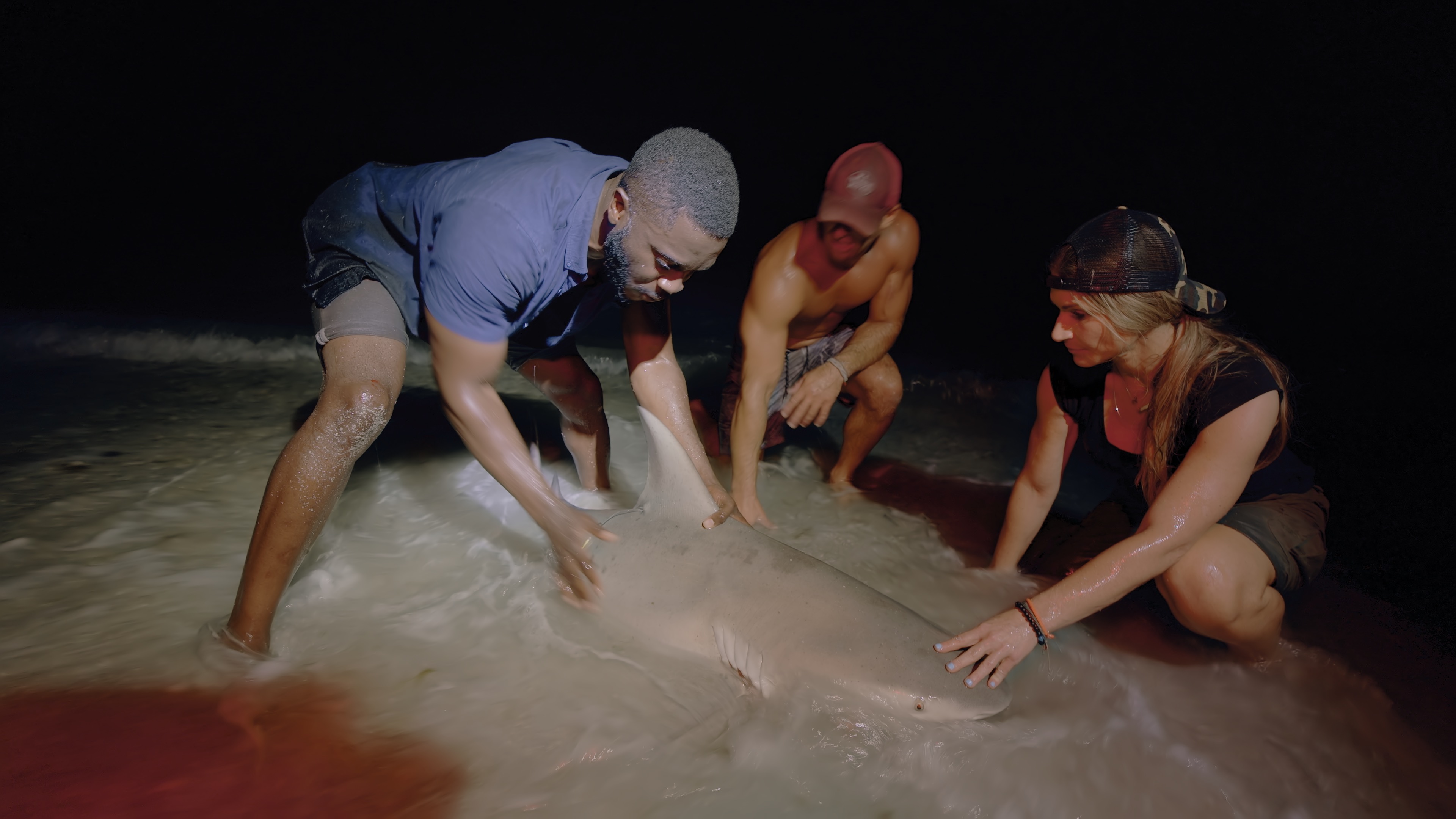
Still from ‘Evolve’. Image: courtesy of Curiosity Studios
One of the stories that Evolve covered in Namibia is looking at termite mounds. “Termites build their nests in the bottom of these huge towering mounds; they don’t actually live in the top half. They live in the bottom half, and the tower helps regulate airflow and temperature through a temperature differential. These mounds are super hard — if you were to drive a car into that, your car would know and you’d probably know as well — but at the microscopic level, you’ve got these tiny little pores, and how the mound works is that the prevailing wind blows across the top so you get a pressure differential,” Aryee says.
“This tower acts like an inorganic lung, completely cycling the air, I think it’s about every 45 minutes, taking out carbon dioxide and bringing in fresh oxygen. If we take that same principle and apply it to our towers, our buildings and skyscrapers, we could overcome the challenge of having to use so much energy on HVAC units (heating, ventilation, and air conditioning).
“Of course, the solution would be to completely electrify our systems and to have our power grids and power plants running on renewable, but until then, this is something that we could do just by changing the structures of our buildings. I think there’s a place for protesting, and speaking to our MPs and political leaders but I also think that we have to try to make conservation make sense as in rands and cents and I think that biomimicry taps into that innovation to show the financial investors, business investors that these systems will actually make you money. That then gives them a stronger reason to protect these ecosystems.”
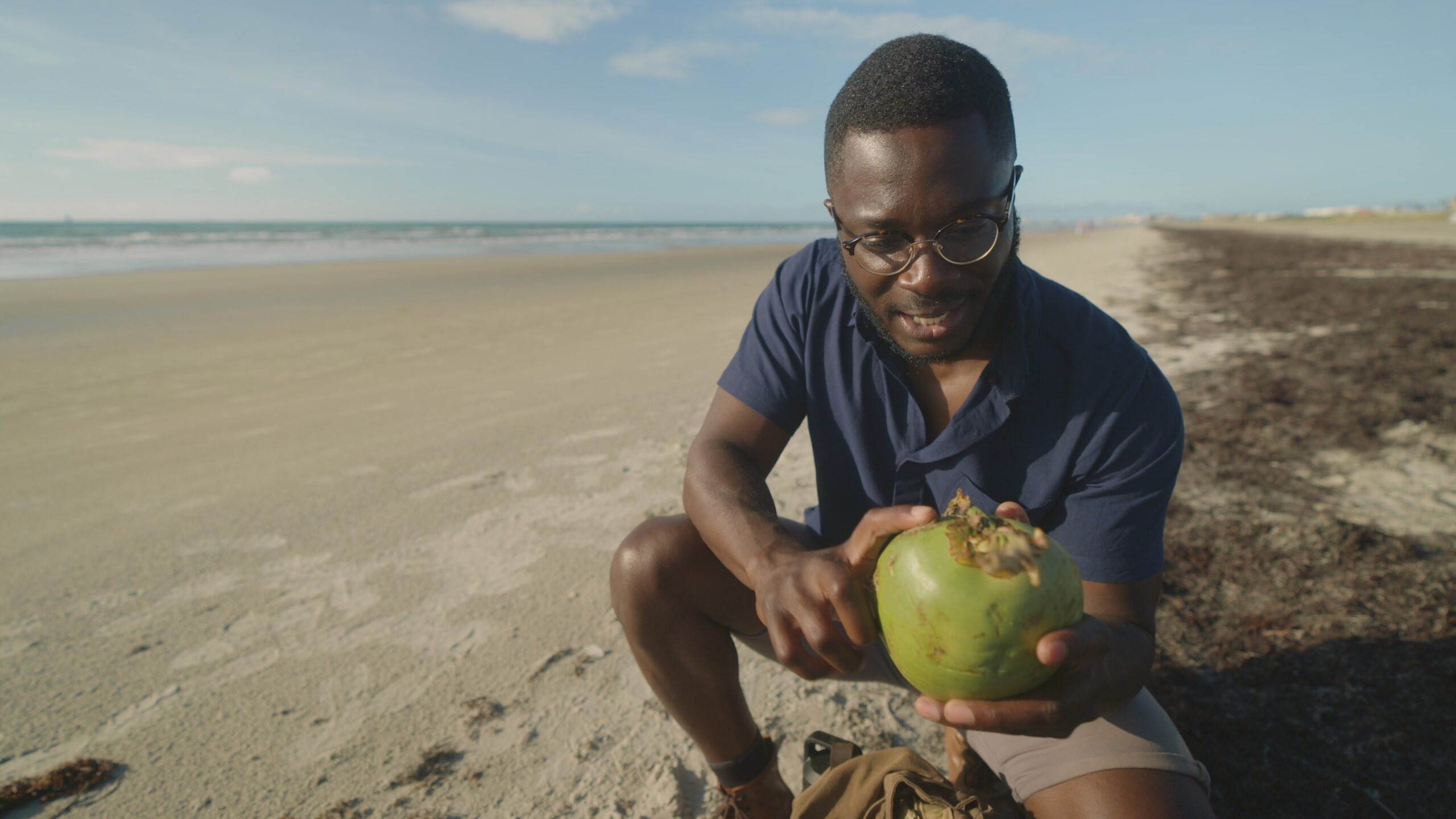
Still from ‘Evolve’. Image: courtesy of Curiosity Studios
Evolve is top-of-the-range science communication in its reduction of technical phenomenon relating to molecular biology, thermodynamics, architecture and many other innovations into colourful and entertaining nuggets which are easy for laymen to digest.
Although Aryee’s hosting makes the series feel a little like a travel magazine or social media feed, his charm and passion inspire child-like wonder in organisms as foreign and unusual as the leaf sheep sea slug to those as commonplace as a coconut. DM/ ML
Evolve is available in South Africa on Curiosity Channel (DStv 185) from Wednesday, 5 October at 21:00. You can contact We’re Watching via [email protected]
In case you missed it, also read ‘Steinheist’ — scrutinising and dramatising South Africa’s biggest corporate scam
‘Steinheist’ — scrutinising and dramatising South Africa’s biggest corporate scam
Visit Daily Maverick’s home page for more news, analysis and investigations














 Become an Insider
Become an Insider
Comments - Please login in order to comment.